As closed borders and shelter-in-place restrictions continue to be in effect around the world, travelers and travel-related service providers alike are wondering, “What are some unique ways people can enjoy the pleasures of travel without leaving their homes?” I recently attended an event attempting to deliver one of Japan’s most popular experiences, the tea ceremony, into people’s homes online.
The event was hosted by IGLOOO, which in full disclosure, is Voyapon’s parent company. 10 online guests were treated to an intimate online tea ceremony experience after receiving a gift in the mail of matcha and tea making utensils so they could make their own tea at home along with their virtual host.
Can You Do Tea Ceremony Online?
In its most basic sense, the tea ceremony is a group of people gathered together to enjoy the magical elixir called matcha. At one time, there was much more pomp involved in tea ceremony, but from the late 16th century, Japanese tea master Sen no Rikyu and his disciples, many of whom were influential daimyo lords, stripped away everything unnecessary and made tea ceremony accessible to the masses. Today’s Japanese tea ceremony is a balance of moderation that engages all five senses but does not overpower any of them.
It is perhaps the simplicity of the tea ceremony that makes it easily portable to an online venue. Though just like with anything else, the virtual experience can never completely replicate the analog one, but it comes close, especially when provided with the tools to “play along” at home.
Tea ceremony consists of both observation and participation. The guests sit quietly and observe the host as he or she enters the room and performs the ritualized steps of tea ceremony: purifying the tools, making a bowl of tea for each of the guests, and purifying again. The host then has a time of haiken, a sort of “show and tell” with the instruments she used in the tea ceremony and allowing the guests to admire them and ask questions. In recent times, guests might then make their own bowl of tea if they are so inclined.
The Voyapon Tea Experience
Along with several other Voyapon contributors and friends of IGLOOO staff members, I received a lovely gift package in the mail about a week before the event. It consisted of a tea bowl, tea scoop, tea whisk, and tea container, the essential tools for performing tea ceremony. Also, the package included some special paper napkins used as a “plate” for the sweets that are eaten along with the tea, a wooden pick used to cut and pick up the softer types of Japanese sweets made from mochi or yokan, a small paper with handwritten calligraphy (which I will explain later), a small tin of matcha powder, and a bag of Fujimien green tea bags.
As one who has practiced tea ceremony over the past few years, I admired the lovely selection of gifts picked out by the staff at IGLOOO, which I would be able to use to make tea at home long after the online experience.
In full disclosure, I also attended a rehearsal of the event a few days prior so I could take some photos for this article. I didn’t want to have to worry too much about covering the actual event from a writer’s perspective, so I could actually relax a little and enjoy the experience. This is also why you might see photos that appear to be from two different events in this article.
On the day of the event, I put on one of my kimono and my favorite blue obi and took the train to a quiet suburb of western Tokyo. I arrived at the home of Furuya-sensei, an instructor of tea ceremony who has been teaching for over 20 years, and the teacher of our host for the ceremony, Takashima-sensei. Both Furuya-sensei and Takashima-sensei are passionate about both tea ceremony and making it more accessible to non-Japanese people, so they were enthusiastic about participating in this event.
On the second floor of Furuya-sensei’s house, she built a charming tea room. In Tokyo, where living space is at a premium, having a room dedicated to practicing tea is a rarity, and one this lovely is rarer still. The elegant tokonoma, the recessed area that holds decorative items that are part of the tea ceremony experience, was framed with elegantly stained and lacquered pieces of natural wood and low windows covered by shoji screens let soft light filter in. That warm day, the windows were open to let in a breeze, but there was still shade provided by bamboo screens outside.
As the guests logged into the Zoom meeting, they were greeted by Furuya-sensei and our MC, IGLOOO employee Saeka, who wore a lovely pale green kimono for the occasion. Saeka is fluent in Japanese and English and helped translate for Furuya-sensei during the explanations of the tea ceremony procedures and elements.
Two cameras were set up in the tea room to show both wide-angle and closeup views of the actual tea ceremony. A staff member with a roving camera was also in the tea room to help get closeups of the tea ceremony elements as they were being introduced, and I sat nearby so I could get photos of the live-action for this article. In an adjacent room, Saeka and Furuya-sensei sat with their own camera, narrating the event. After a general overview of the experience was explained to the participants, Saeka and Furuya-sensei began by explaining the various elements that had been chosen for this particular tea ceremony.
In the tokonoma, a scroll written by a monk of Daitokuji Temple in Kyoto Prefecture hung with the phrase “kunpu jinanrai” 薫風自南来, “A summer breeze comes from the south”. Furuya-sensei chose this scroll because this phrase perfectly embodies the typical weather patterns of late May when the weather is warm but still pleasant. Each of the participants received a small slip of washi paper with the phrase written in calligraphy with their gift packages.
A blue, crane’s neck style vase with white unohana flowers were also arranged in the tokonoma, both the blue color and the flowers representative of early summer. Finally, an extraordinary element, a gift from the craftspeople of Murakami city in Niigata specifically for this event, was introduced to everyone. This was a handcrafted incense container created using a unique process called Murakami Kibori Tsuishu. It involves the carving intricate designs into wood and applying a vibrant red lacquer over the entire surface. Wooden incense containers are preferred during the summer season over ones made of metal. Every element used in tea ceremony is chosen to support an overall theme and create a pleasant experience for the guests. This is no different in virtual or analog tea ceremony.
At this point, Takashima-sensei began the tea ceremony. As we silently observed the process, known as temae, I recognized a peacefulness that comes from watching the rhythm and fluidity of the host’s actions. In tea ceremony, there is no embellishment of actions; each motion is performed with intention and purpose. This simplicity comes from tea ceremony’s deep connection with zen.
After observing the tea ceremony, it was time for a little interactivity between guests and hosts. Each of us had been instructed to bring some type of sweets available to eat with our tea. There were no restrictions as to the type of sweets we should bring, so we had a wide variety among us. Because all the participants in the inaugural event were located in Japan, most people chose Japanese style sweets. I had visited a local shop in my neighborhood that made a specific type of Japanese sweets made from a particular kind of sugar to be eaten with matcha. Nichole actually made her own beautiful Japanese sweets from sweet bean paste in the shapes of Japanese hair ornaments. Mark and Jonathan had purchased monaka, wafers filled with sweet bean paste. And Michael chose her favorite sweets, chocolate chip cookies. There are no rules about the types of sweets to have with your tea except that you should enjoy them!
Haiken: Appreciating the elements of tea ceremony
One of the interactive elements of tea ceremony is the time known as haiken, the viewing of the utensils. Because the host has taken the time and effort to choose specific utensils to complement the tea ceremony’s theme, it is only natural that those utensils should be shared with the guests. After being purified, the host’s various utensils are brought out for the guests to see, touch, and ask questions about. This is an opportunity for the guests to show respect and gratitude toward the host for the preparation involved in the event.
Though it is unnecessary to use unique or expensive tea utensils, some tea ceremony practitioners have museum-quality utensils that are family heirlooms that they use during tea ceremony. Sometimes, haiken can be an opportunity to literally get hands-on with some unique art pieces or history.
In our case, it was an opportunity to get a closeup view of the incense holder made by Murakami city’s Kosugi Shikki, a lacquerware shop specializing in the famous Murakami Kibori Tsuishu process. Bringing this amazing work of art close to the camera, we were able to see just how intricate the carving was. In an accompanying video, Mr. Kosugi explained that a small piece of art like this can take 2 months to produce. I was also surprised to find out that in this process, the more the article is handled, the shinier it becomes! These products become better with age, not worse, and are designed to last for hundreds of years.
Making Our Own Matcha
Finally, it was time to make our own matcha. First, Furuya-sensei explained the utensils we would be using to make tea, which everyone had received in their gift packages. Switching to the closeup camera with an overhead view, Takashima-sensei demonstrated the process of making a bowl of matcha tea at home while Saeka explained it in English.
The results of the tea making were mixed and the source of some good-natured joking. It actually takes a surprising amount of practice to mix matcha well enough to put a froth on top of it, and it can be a bit humbling for beginners when they find that out. But not to worry; now that all the participants had their own utensils and matcha powder, they were free to practice in the privacy of their own homes!
In case we just wanted a simple cup of green tea, another company from Murakami city, Fujimien, provided each participant with a supply of green tea bags. The tea leaves of Fujimien are grown on their farms using the unusual process where the tea is grown while the tea trees are covered in snow, creating a richer flavor. It is only because of Murakami’s location that they have the climate to grow tea under these circumstances.
Learning More about Japanese Tea Culture
At this point, the hosts opened up the call to questions about tea ceremony. We learned some interesting things about tea itself as well as how to experience it around Japan when it is safe to travel again.
For example, 80% of Japan’s green tea is grown in 2 regions of Japan, Uji in Kyoto and Nishio in Aichi, but there are many other places where you can experience the tea culture. For example, Higashisonogi is an area in Nagasaki Prefecture where you can stay on a tea farm and even try picking tea during the season.
Some interesting places to experience tea ceremony were suggested, like tea with monks before meditating at a Buddhist temple or having tea dressed in kimono in an old samurai residence in Kagoshima. You can even have tea in Sakai city, Osaka, at the birthplace of Sen no Rikyu himself, the father of Japanese tea ceremony.
IGLOOO’s Vision: Sustaining the Traditions of Japan
I’m not going to pretend the virtual tea ceremony experience is a perfect replacement for the analog experience. We all know how rare it is for any event to be better viewed from home than it is in person. But if you’ve never experienced tea ceremony, a virtual experience can still be a good one and can help prepare you to enjoy the experience more when you can do it in person. What made the IGLOOO experience a particularly good one were the excellent gift packages sent to the participants in advance that allowed us to try making tea at home, and also the special regional products from Murakami that were explained to us during the event.
It was the latter that helps set this event apart from other companies who may be doing the same thing. Beyond making Japanese culture accessible to the world during a global pandemic, IGLOOO has a bigger vision. There are hundreds of small artisans and craftspeople in Japan whose work goes virtually unnoticed in the world, even when people are free to travel at will. The Kibori Tsuishu craftsmen of Murakami, for example, are not even well known by their own countrymen, let alone people from overseas. And unfortunately, crafts made by small-scale artisans who are not well known are in danger of becoming extinct.
The folks at IGLOOO explained to me that they have a vision of helping these small business artisans find a broader market on the global stage, a market that might help sustain their business, especially during economically lean times. Hosting events like this where they can promote the crafts and products of Murakami city is one opportunity to help save these businesses for the future of Japan and for the world.
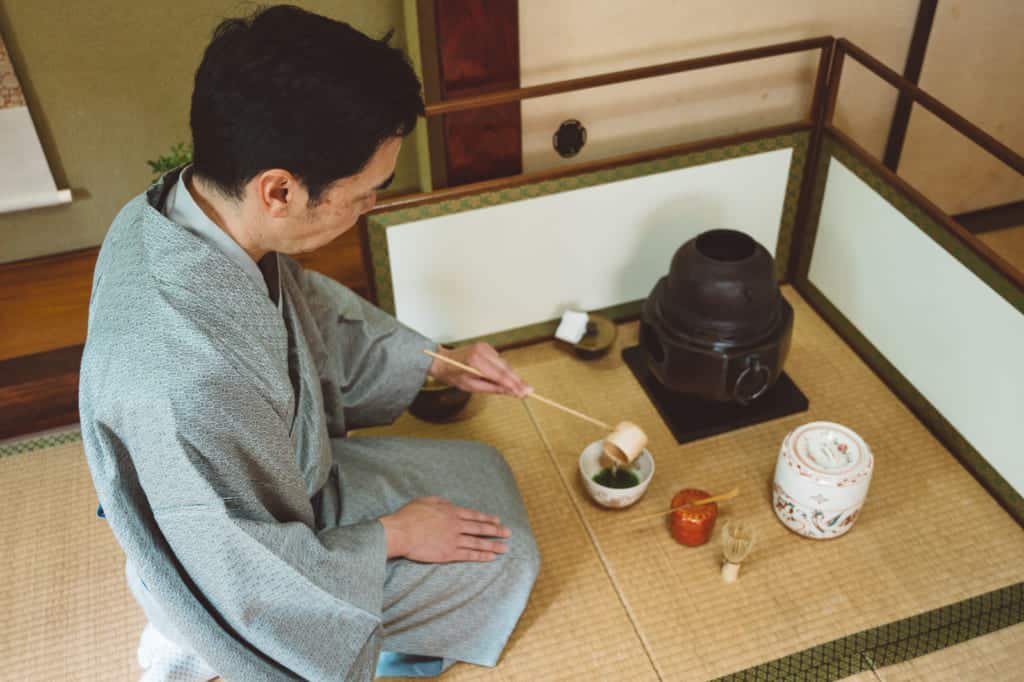
I had a chance to practice the tea ceremony temae myself 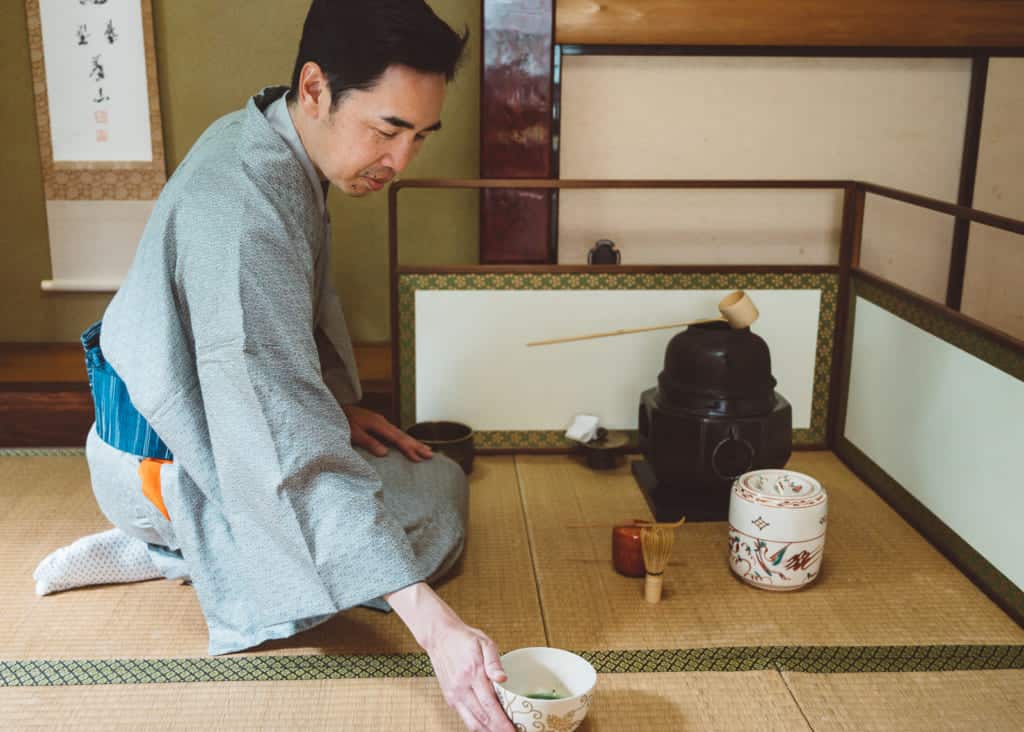
IGLOOO plans to host more events like this one in the future and open it up to people worldwide. It might be possible that they will host them in other languages like French, Spanish or German. And once you experience part of Japanese culture online and become acquainted with the products of some Japanese craftspeople, it is their hope you will visit Japan in the future and meet some of these people who are sustaining Japanese culture through traditional arts and crafts.
If an online tea ceremony experience like this sounds interesting to you, leave the folks at IGLOOO a message in the comments and let them know!
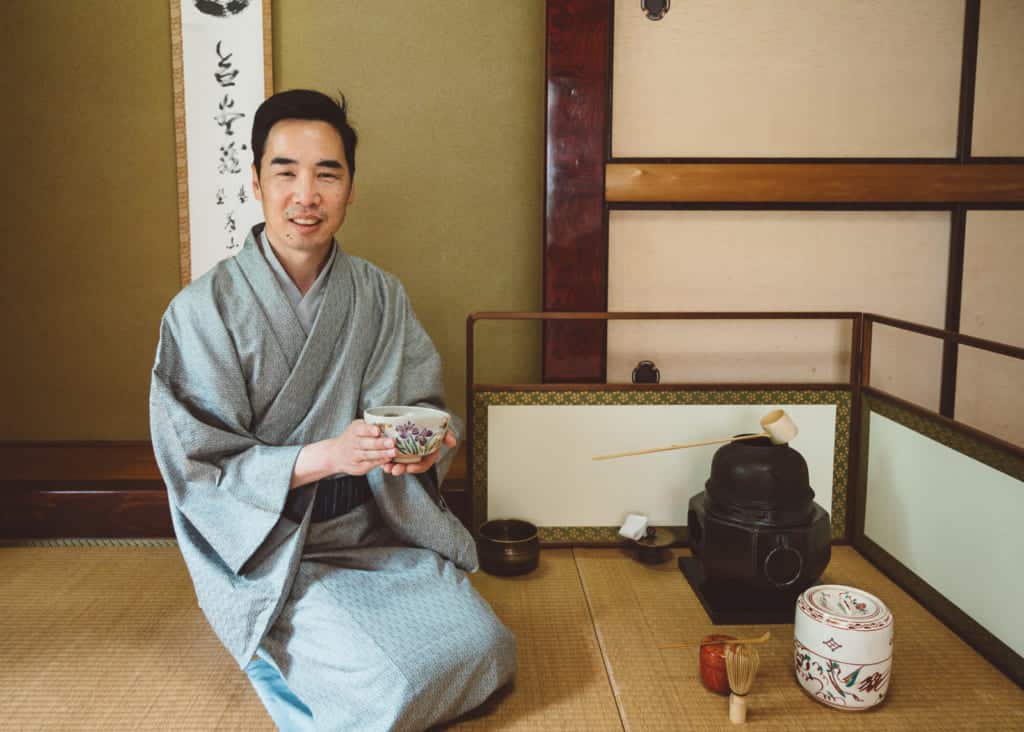
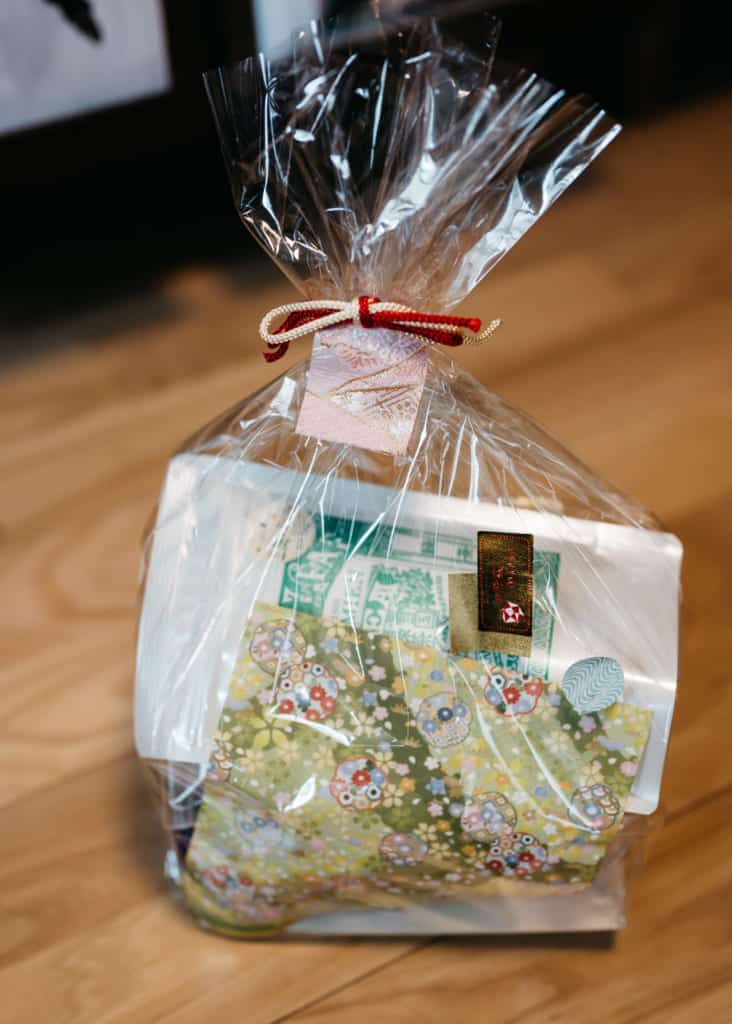
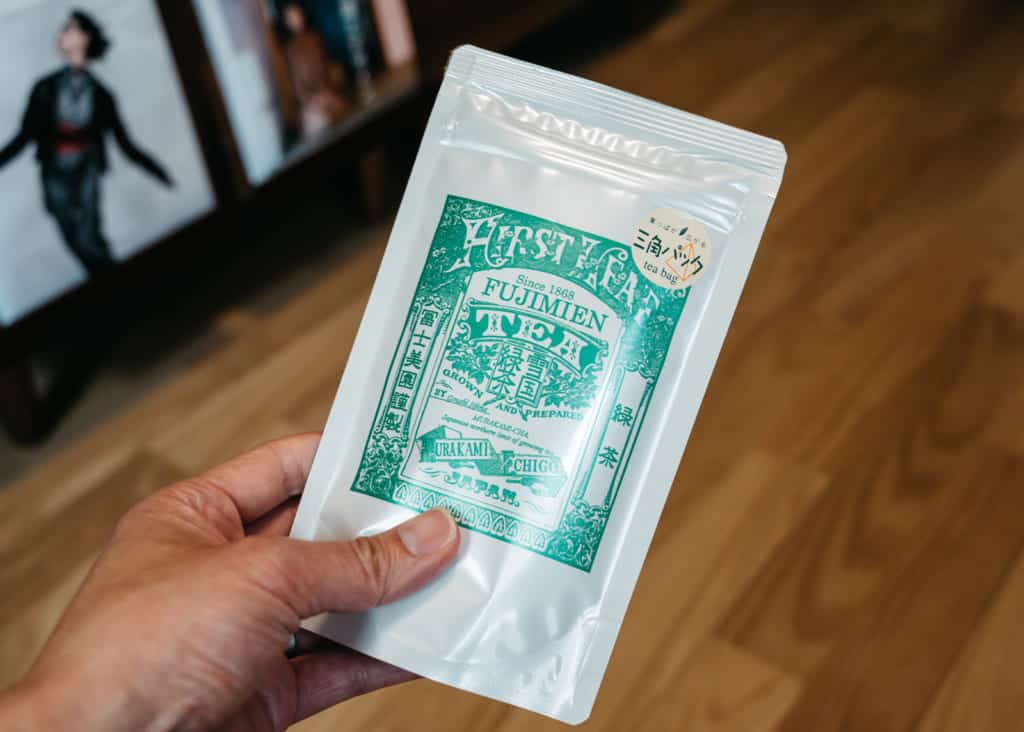
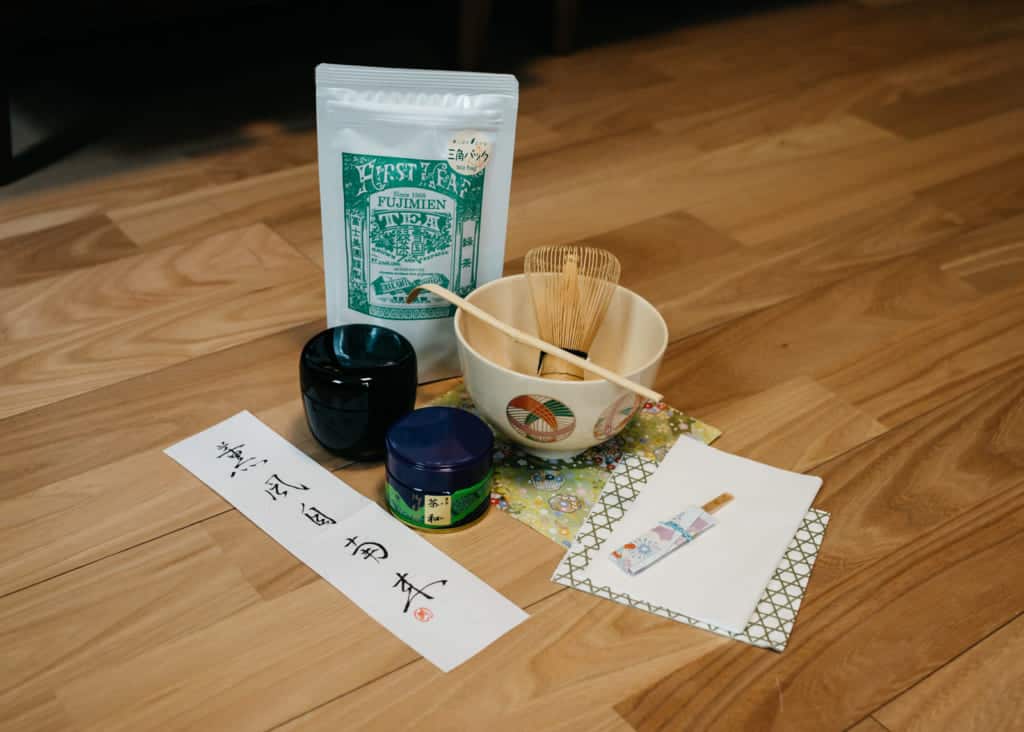

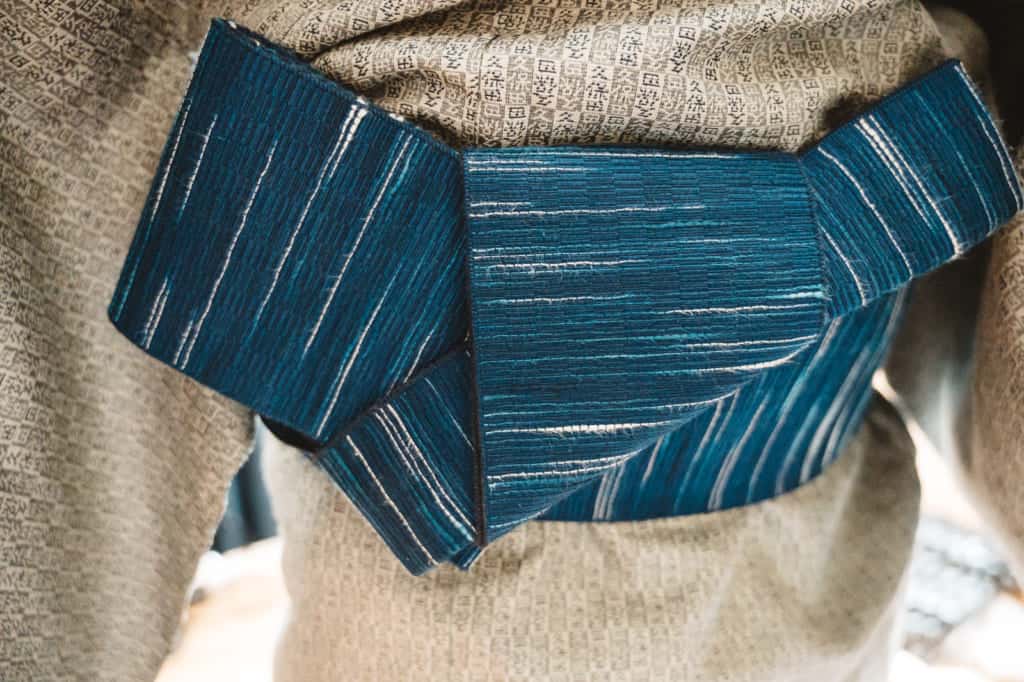
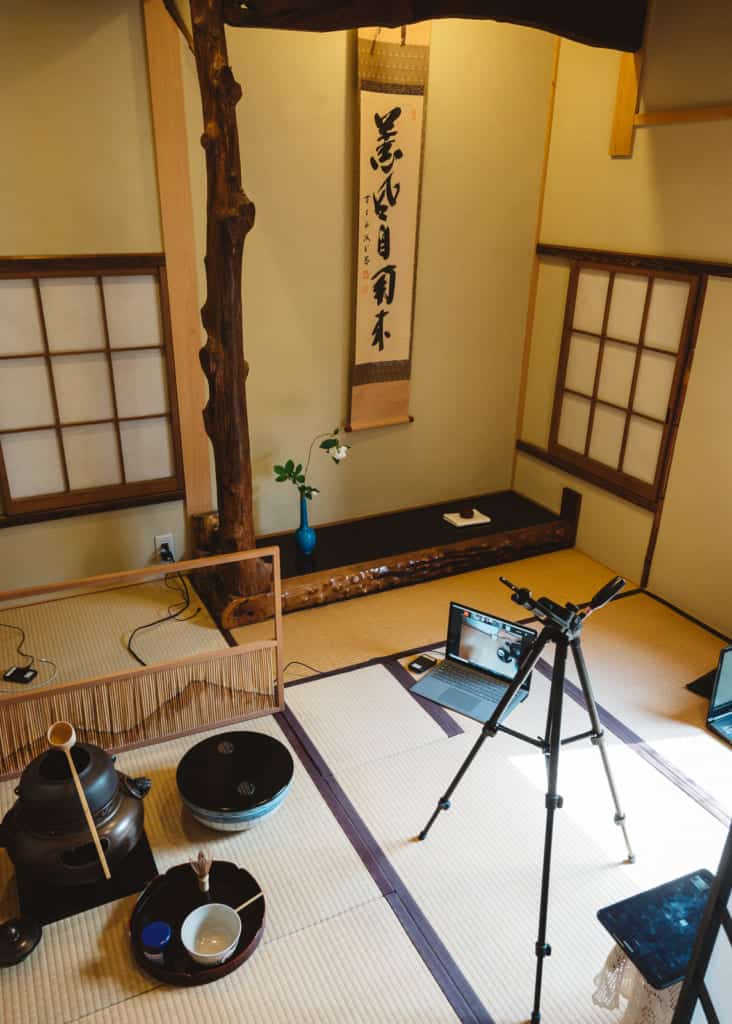
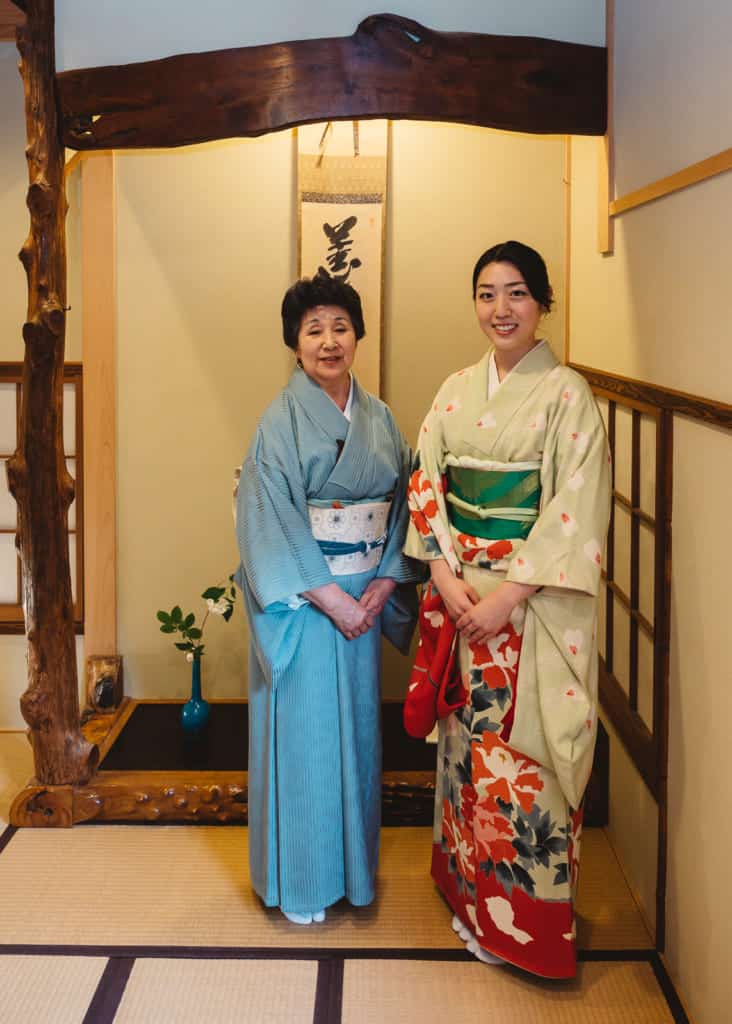
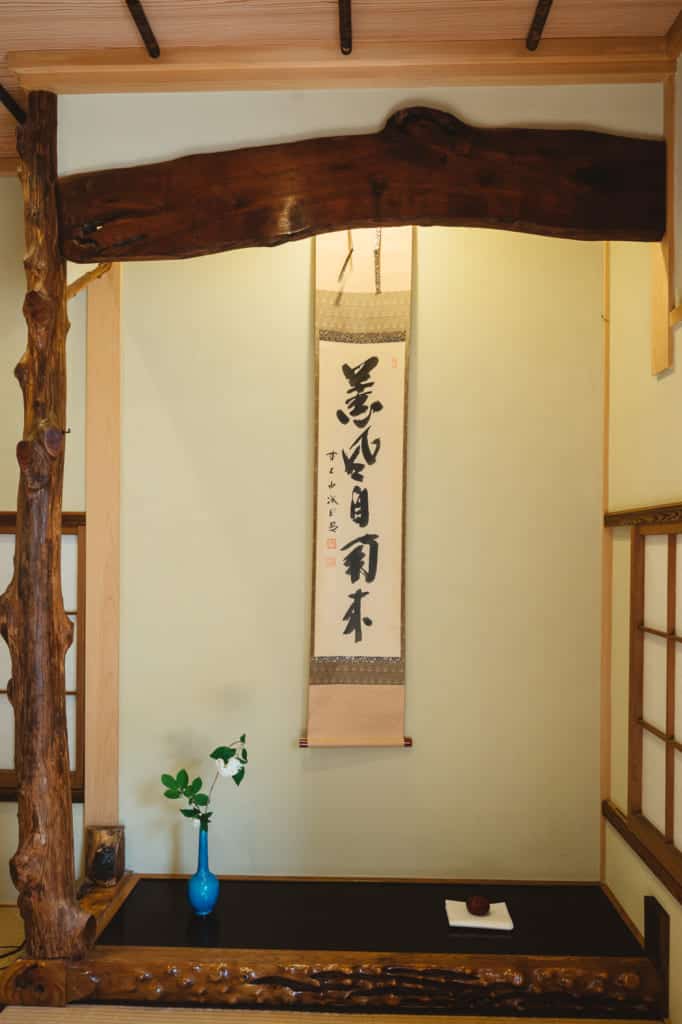
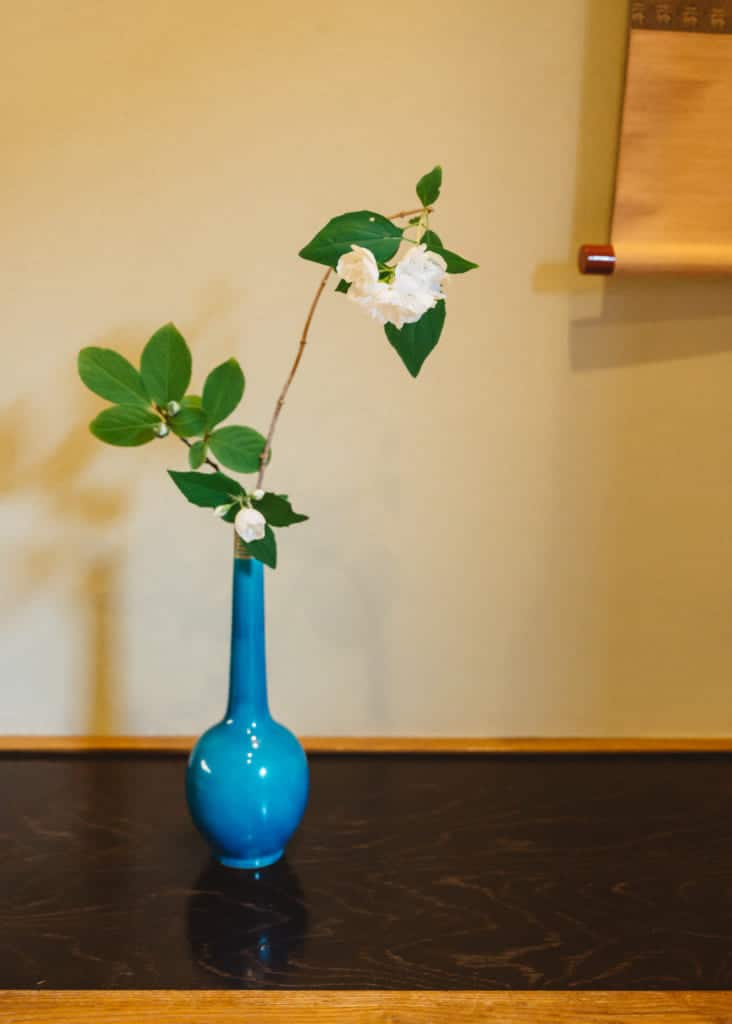
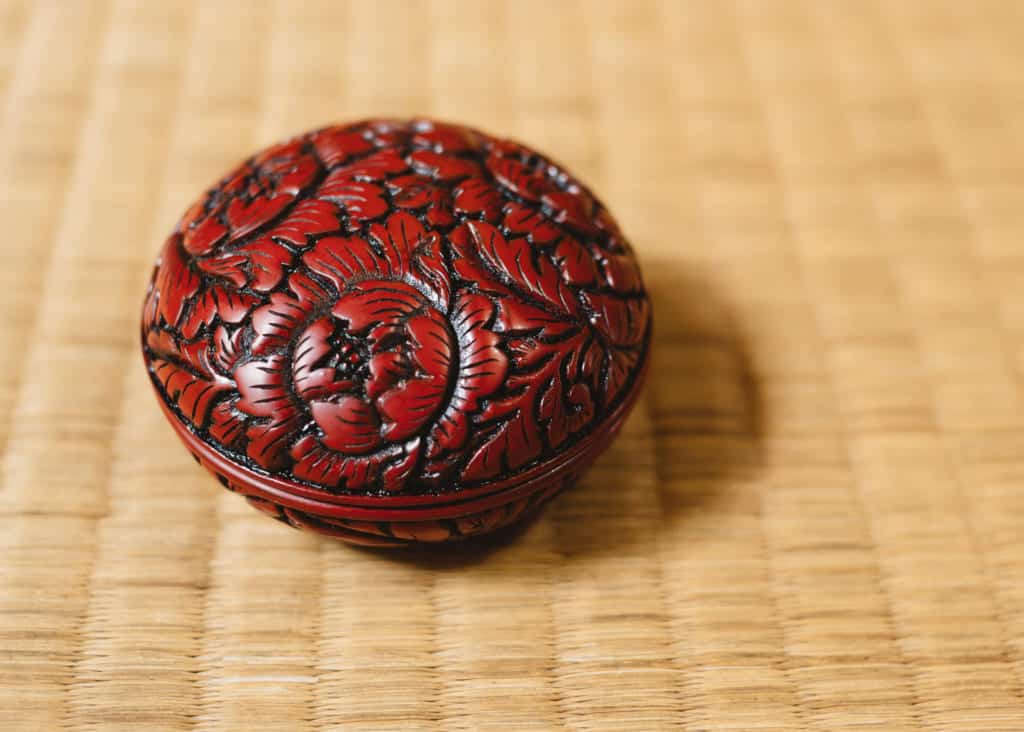
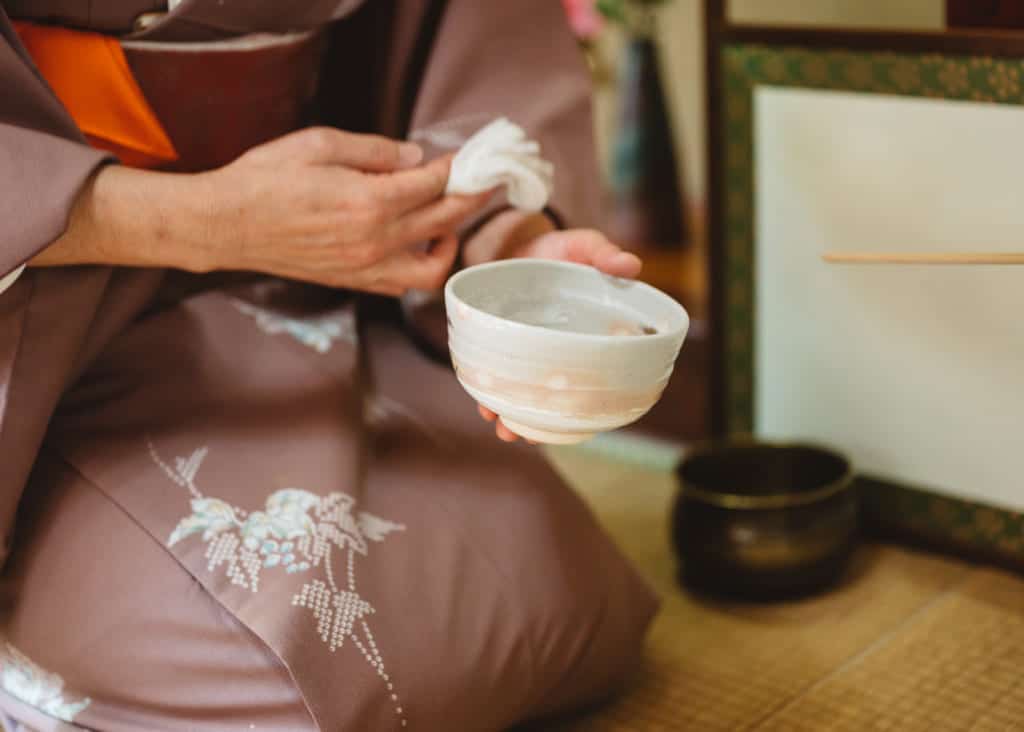
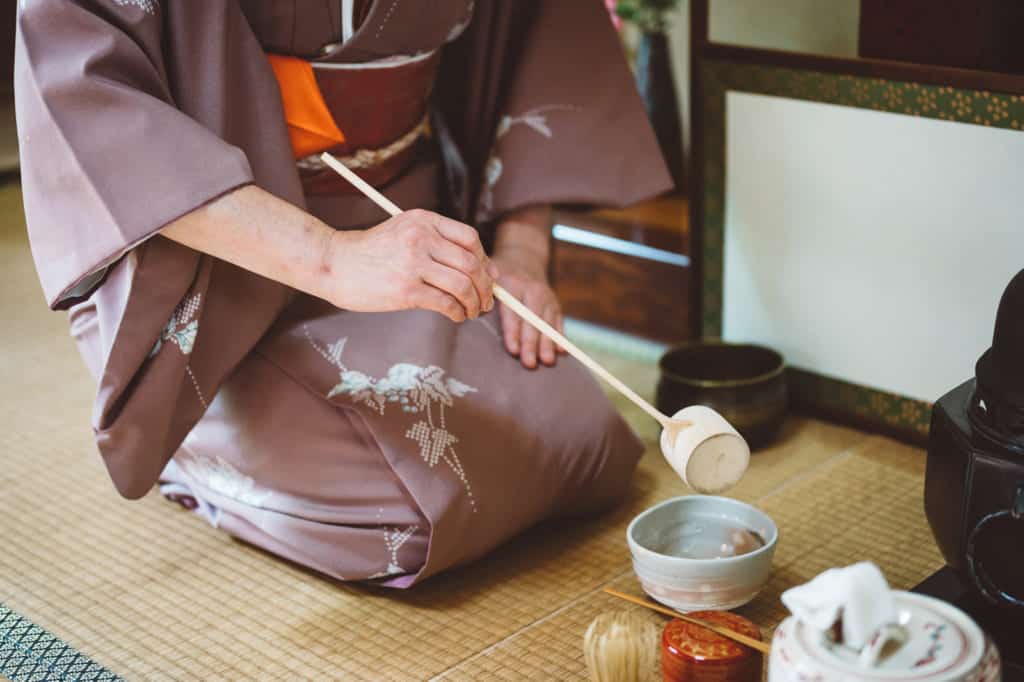
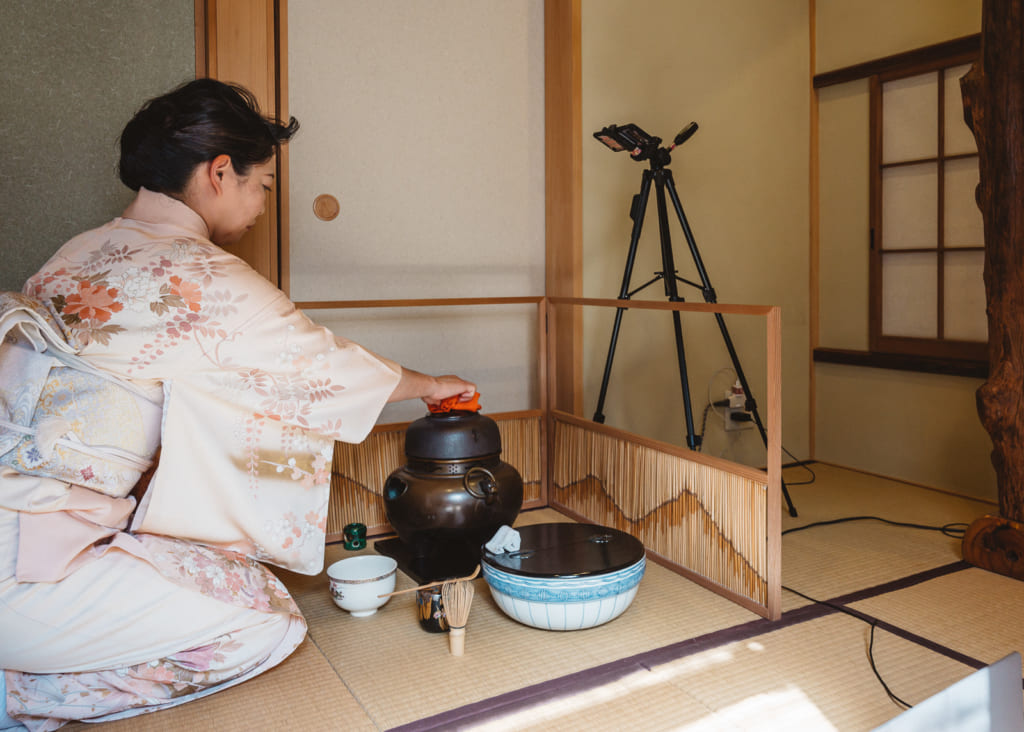
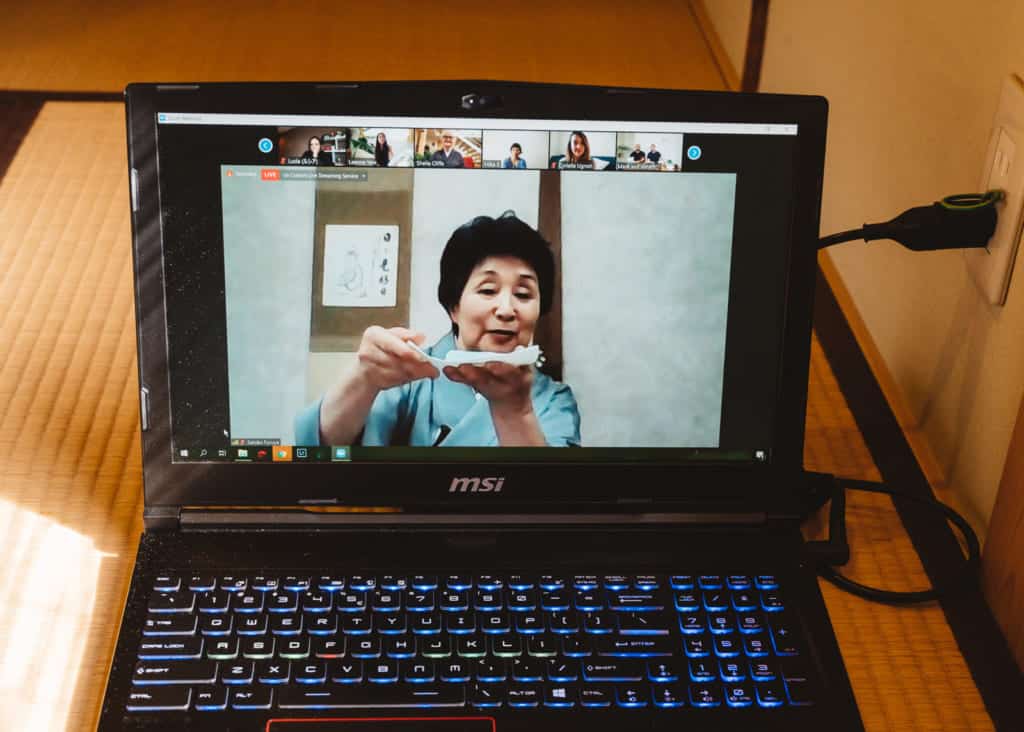
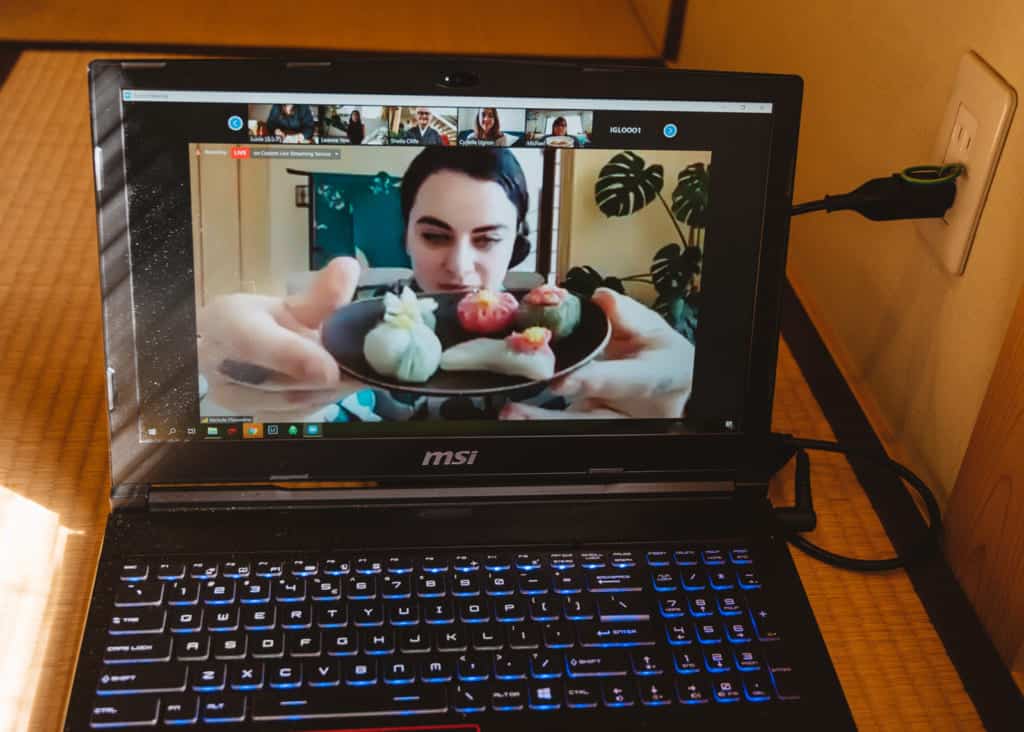
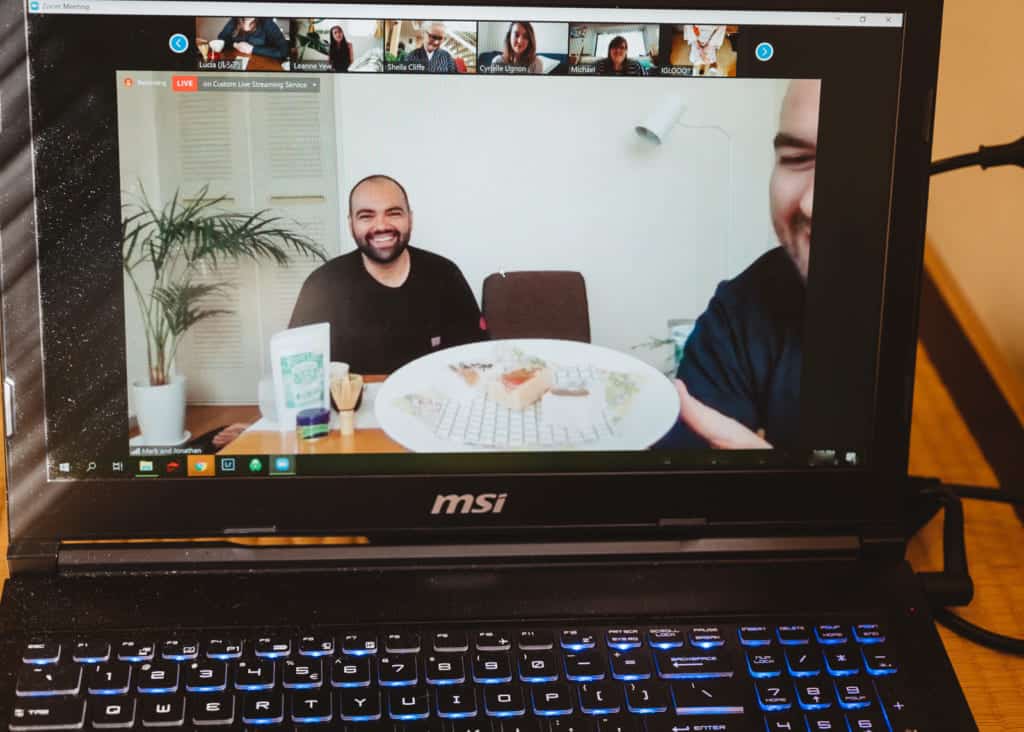
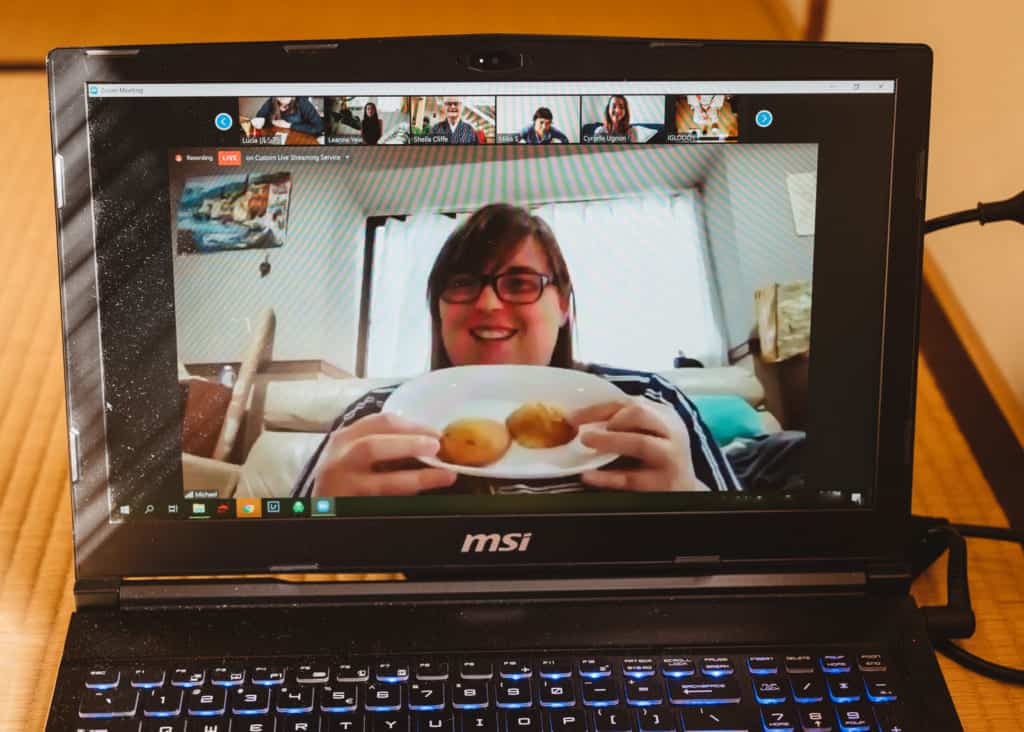
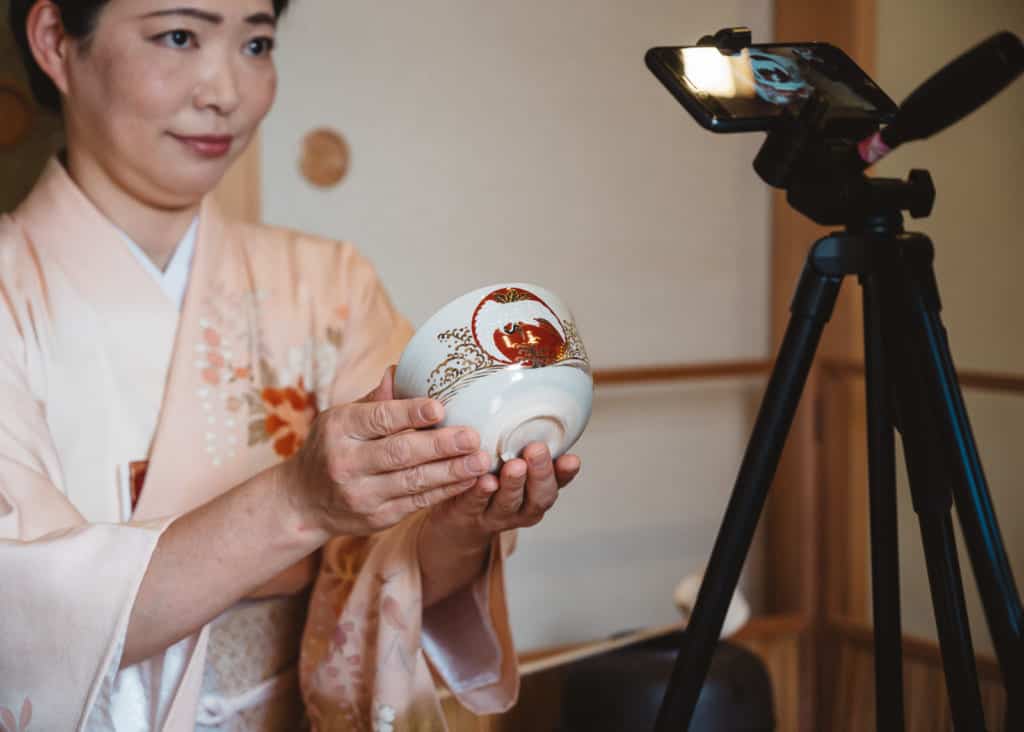
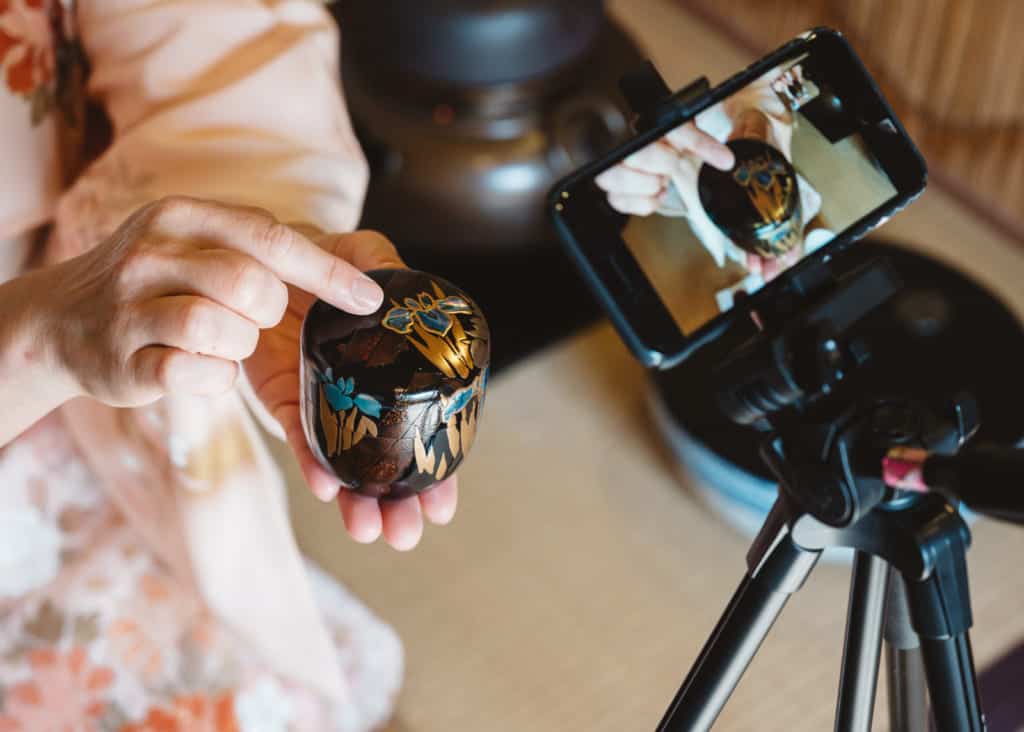
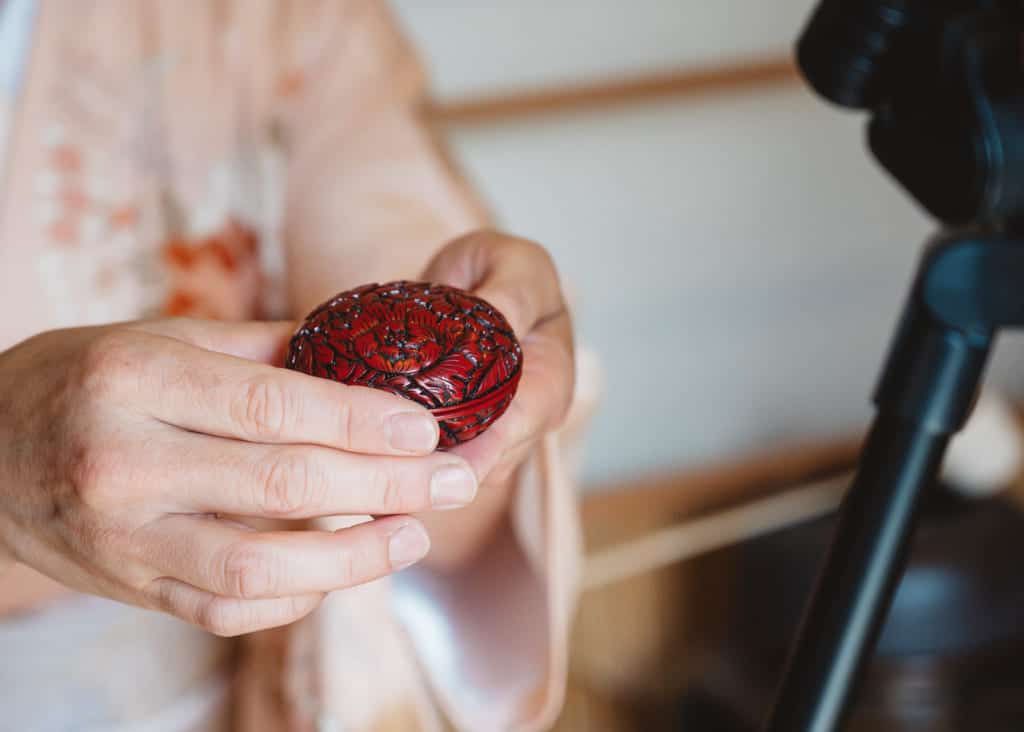
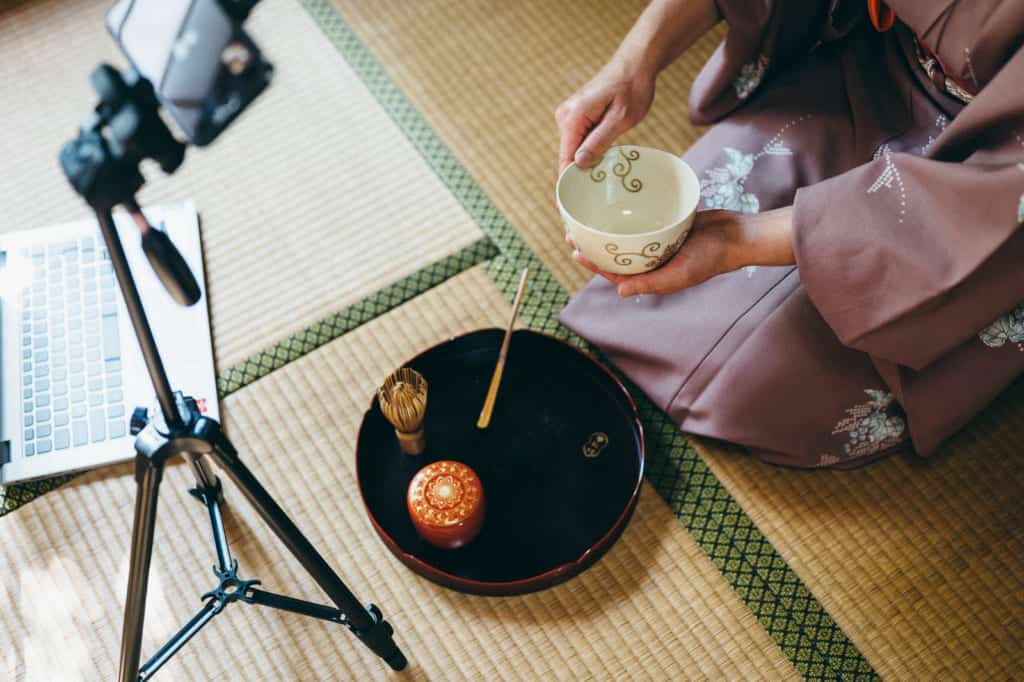



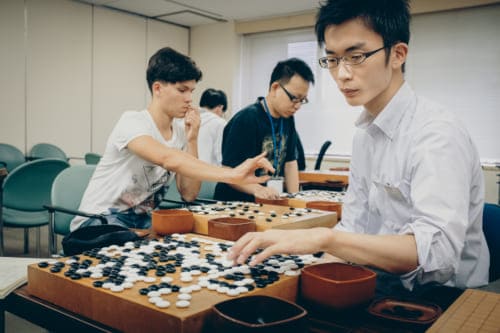
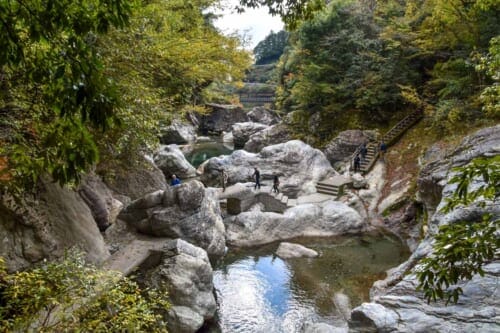


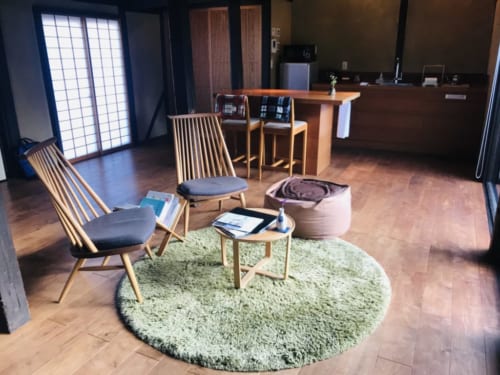


Very well done- arigato
Thank you Andrea! Glad you enjoyed it!
This is such a wonderful experience. I would love to participate in future online tea ceremony experience !!!
Thank you Marion. We hope this is something we’ll be able to offer to a wider audience soon! Please keep checking back with us!
I would very much like to experience the tea ceremony! When is the next one? What is the cost? Thank you!
Hi Gene, thank you for your interest in the tea ceremony! We don’t have any concrete plans for the next one just yet, though please keep checking in with us (or follow us on Facebook or Instagram for updates) as we’ll likely announce it in the future for a chance to participate.
Hello! I am interested in hosting this type of experience for a private corporate audience. Is this something you can offer?
Hi Janice,
At the moment, we’re not offering this online tea ceremony as a service.
Thank you for your question!